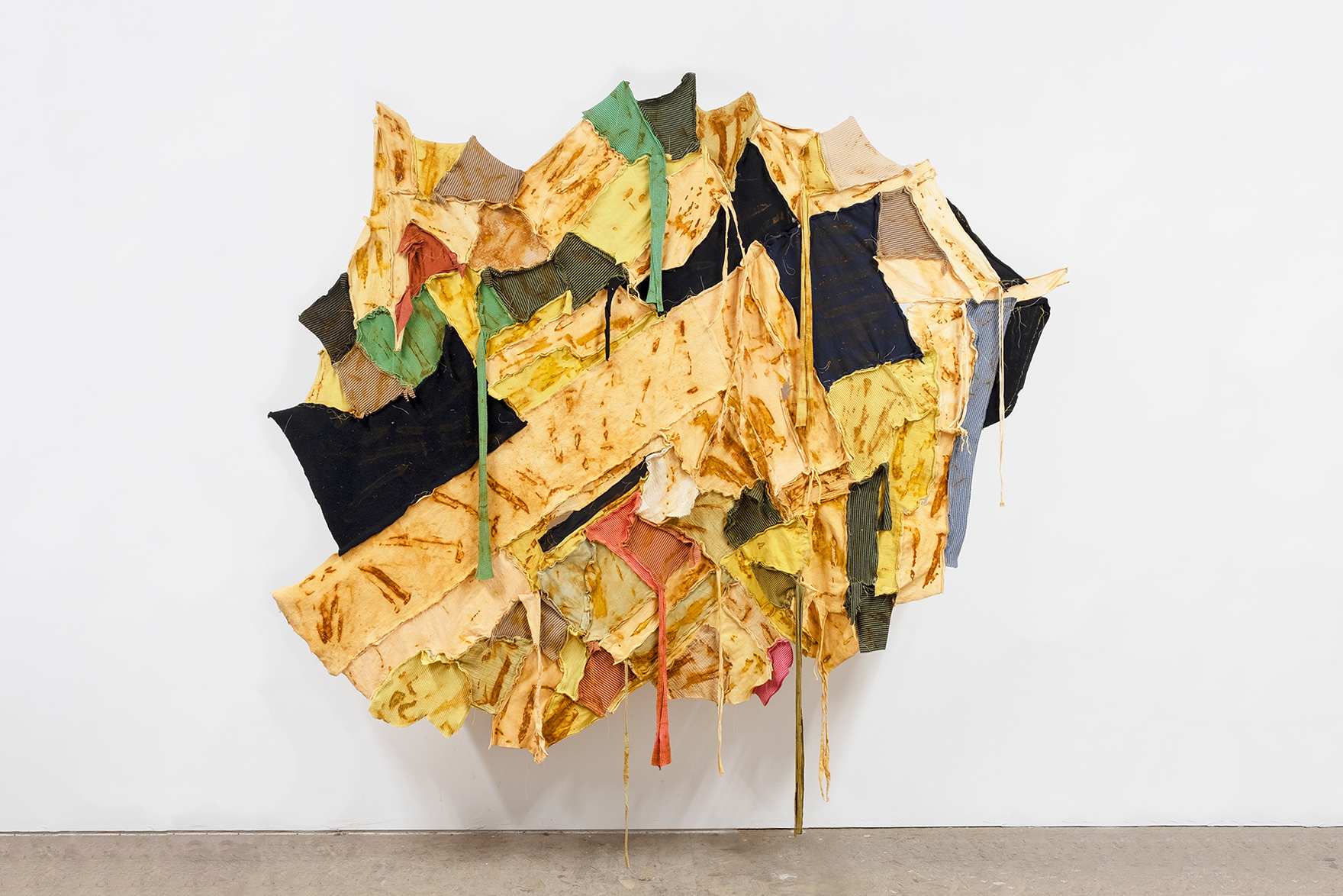Before the Last Spike
Before The Last Spike links two different histories of the exploitation of immigrant workers: the garment industry and railroad construction, where Asian immigrants formed the lion’s share of the labor force. It incorporates scrap fabric collected from Los Angeles and New York garment factories. Representing the negative space and waste product generated by workers and industry, the offcuts are sewn together and manifest an embodied collectivity while betraying their discrepant multitude, retaining their original shapes, textures and colors. The offcuts are marked with the railway spikes used in the construction of the Transcontinental Railroad. This evokes archival photographs such as “The Last Spike,” which documents the driving of the so-called last spike joining the eastern and western legs of the railway: it is important to note this image features only white men, despite the fact that most railway workers were Chinese immigrants. Countering this false narrative, I rust-dye the fabric scraps with railway spikes, which directly links the historical exploitation of migrant labor and present-day exploitation in the garment industry. The repetition of the labor-intensive process of dyeing and sewing challenges the colonial, nationalist historical propaganda with the physical presence of historically and politically charged materials.

Before the Last Spike 2, 2023, fabric scraps rust-dyed with railway spikes, 87 (H) x 128 (W) x 3 (D) inches

Before the Last Spike 2, detail view

Installation view. (from left) Before the Last Spike 1, Before the Last Spike 2, Before the Last Spike 4
 Before the Last Spike 1, 2023, fabric scraps rust-dyed with railway spikes, 76 (H) x 68 (W) x 3 (D) inches
Before the Last Spike 1, 2023, fabric scraps rust-dyed with railway spikes, 76 (H) x 68 (W) x 3 (D) inches
Before the Last Spike 4, 2023, fabric scraps rust-dyed with railway spikes, 106 (H) x 104 (W) x 3 (D) inches

Before the Last Spike 3, 2023, fabric scraps rust-dyed with railway spikes, 80 (H) x 81 (W) x 3 (D) inches